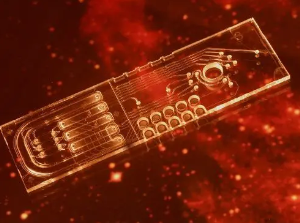ESA – Life Marker Chip
Further Reading:
Integration of Optical Waveguides and Microfluidics in a Miniaturized Antibody Micro-Array System for Life Detection in the NASA/ESA ExoMars Mission
A. Prak, H. Leeuwis, R.G. Heideman, G. Borst.
Searching for life on Mars: selection of molecular targets for ESA’s aurora ExoMars mission.
Parnell J, Cullen D, Sims M, Bowden S, Cockell CS, Court R, Ehrenfreund P, Gaubert F, Grant W, Parro V, Rohmer M, Sephton M, Stan-Lotter H, Steele A, Toporski J, Vago J.

